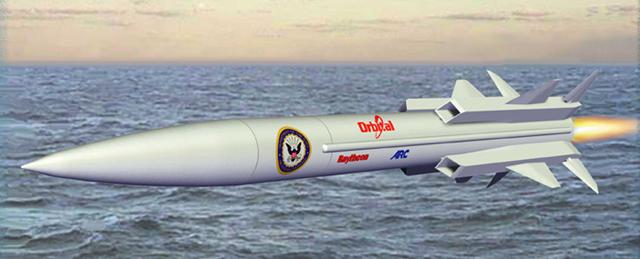During the U.S. Navy's Combat Ship System Qualification Trials, the
USS Chancellorsville (CG 62) tested two Raytheon Company Standard Missile-6
interceptors against anti-ship and cruise missile targets. As part of
'engage on remote' scenarios, the ship launched the SM-6 interceptors
prior to its own radars 'seeing' the incoming threats, using targeting
information from another Aegis ship in the area—the USS Sampson
(DDG 102). |
The first
SM-6 intercepted a low-altitude, short-range supersonic target (GQM-163A),
while the second intercepted a low-altitude, medium-range subsonic target
(BQM-74E).
"Advanced warning and cueing from another sensor or ship allows
the U.S. Navy to take full advantage of SM-6's over-the-horizon capability,"
said Mike Campisi, Standard Missile-6 senior program director. "Now
the warfighter does not have to wait until the threat is knocking at
the door to take it out. Targets are destroyed much sooner and one ship
can defend a much larger area."
Deployed for the first time in December 2013, SM-6 provides the U.S.
Navy extended range protection against fixed- and rotary-wing aircraft,
unmanned aerial vehicles and cruise missiles.
Raytheon has delivered more than 130 SM-6 interceptors to the U.S. Navy.
The missile's final assembly takes place at Raytheon's state-of-the-art
SM-6 and SM-3 all-up-round production facility at Redstone Arsenal in
Huntsville, Ala. |





